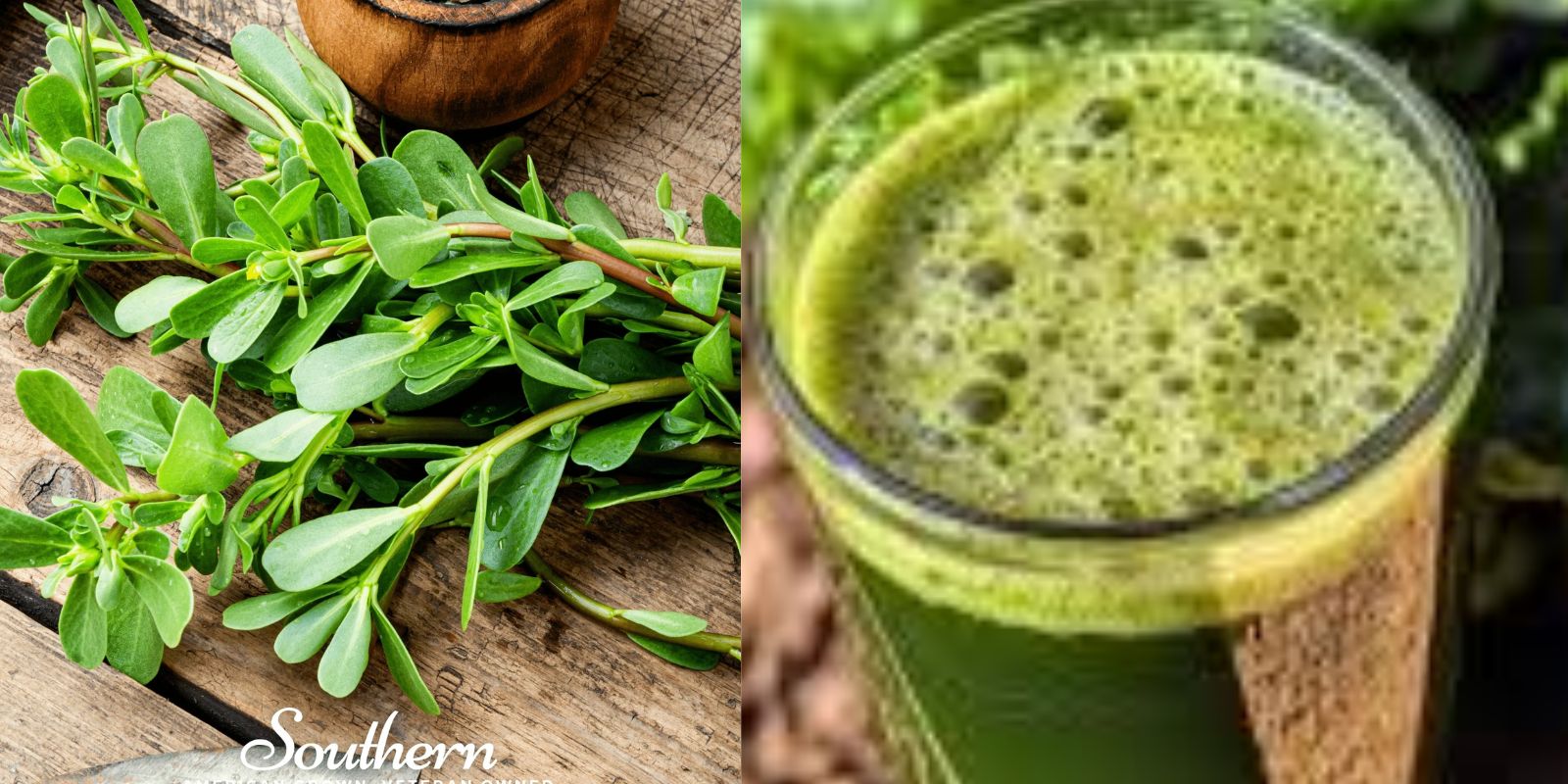Purslane (Portulaca oleracea), often dismissed as a pesky weed, is a plant that deserves a second look. It thrives in gardens across the globe, growing in a variety of conditions, from cracks in sidewalks to lush flower beds. While many gardeners spend countless hours and resources trying to eradicate it, the truth is that purslane is an incredibly beneficial plant. This article explores why you should reconsider your approach to purslane and embrace it as a valuable addition to your garden.
Understanding Purslane
What is Purslane?
Purslane is a succulent annual herb that belongs to the family Portulacaceae. It has smooth, fleshy leaves and stems, and small yellow flowers that bloom in the summer. This hardy plant can survive in harsh conditions, making it a popular choice for gardens in dry climates. It is recognized for its prostrate growth habit, which allows it to spread across the ground, often forming dense mats.
Nutritional Value
Purslane is not just a weed; it’s a superfood packed with nutrients. It is rich in:
- Omega-3 Fatty Acids: Purslane is one of the few plant sources of alpha-linolenic acid (ALA), an essential omega-3 fatty acid that contributes to heart health.
- Vitamins: Purslane contains high levels of vitamins A and C, which are vital for maintaining healthy skin, boosting the immune system, and promoting overall wellness.
- Antioxidants: This plant is loaded with antioxidants that help combat oxidative stress in the body, reducing the risk of chronic diseases.
The Ecological Benefits of Purslane
Supporting Biodiversity
Embracing purslane in your garden supports biodiversity. It provides habitat and food for various insects, including bees, butterflies, and other pollinators. Pollinators are crucial for the fertilization of many plants, leading to increased fruit and vegetable yields. By allowing purslane to flourish, you contribute to a healthy ecosystem that benefits your entire garden.
Improving Soil Health
Purslane also plays a vital role in improving soil health. Its dense growth habit helps prevent soil erosion, particularly in sloped areas. Additionally, it acts as a living mulch, covering the ground and retaining moisture, which is particularly beneficial during dry spells. The presence of purslane can help maintain soil temperature, promoting healthier soil microbiomes.
Natural Pest Control
Purslane can aid in pest management. Its growth can help deter certain pests by creating a barrier or habitat for predatory insects. By fostering a balanced ecosystem in your garden, you can reduce the need for chemical pesticides, making your garden more sustainable and safer for wildlife.
Culinary Uses of Purslane
Edible and Nutritious
Purslane is not just a pretty plant; it’s also edible and delicious! The leaves and stems have a slightly tangy flavor, making them a great addition to salads, sandwiches, and smoothies. Here are some culinary uses for purslane:
- Salads: Fresh purslane leaves can be added to salads for a crunchy texture and a burst of flavor.
- Stir-fries: The succulent nature of purslane allows it to retain moisture during cooking, making it a fantastic addition to stir-fries.
- Smoothies: Blend purslane with fruits and vegetables for a nutritious smoothie packed with vitamins and omega-3s.
Harvesting Purslane
If you’re interested in incorporating purslane into your meals, harvesting is simple. Use scissors or garden shears to cut the stems just above the soil line, leaving the roots intact. This way, the plant can continue to grow and provide more leaves for future harvests. It’s best to harvest in the morning when the leaves are crisp and full of moisture.
How to Grow Purslane
Planting Purslane
If you don’t already have purslane in your garden, growing it is easy. Here’s a step-by-step guide:
- Choose a Location: Purslane thrives in full sun, so select a location in your garden that receives at least six hours of sunlight each day.
- Prepare the Soil: Purslane can grow in poor soil, but it prefers well-drained soil. If your soil is heavy clay, consider mixing in sand or compost to improve drainage.
- Sow the Seeds: You can either purchase purslane seeds or collect them from an existing plant. Sow the seeds directly in the garden in the spring after the last frost, or start them indoors and transplant them later.
- Watering: While purslane is drought-tolerant, regular watering during dry spells will encourage healthy growth. Be careful not to overwater, as this can lead to root rot.
- Harvesting: Once the plant has established itself, you can begin harvesting the leaves and stems. Purslane will continue to grow, allowing for multiple harvests throughout the season.
Mistakes to Avoid with Purslane
Underestimating Its Value
Many gardeners view purslane as just a weed, often underestimating its nutritional and ecological value. Before reaching for the hoe, consider the potential benefits that purslane brings to your garden.
Overwatering
While purslane is drought-tolerant, it does not thrive in soggy soil. Overwatering can lead to root rot and diminish the plant’s health. Ensure that the soil has good drainage and only water when necessary.
Ignoring Its Growth Habit
Purslane can spread quickly, and while this is beneficial for ground cover, it can also take over garden beds if not managed properly. If you find that purslane is spreading more than you’d like, consider designating a specific area for it or using containers to contain its growth.
Conclusion
In conclusion, purslane is a remarkable plant that offers numerous benefits for your garden and your health. Rather than treating it as a nuisance, embrace this hardy succulent as a valuable addition to your gardening repertoire. With its impressive nutritional profile, ecological advantages, and culinary versatility, purslane deserves a place in every garden.
Call to Action
Next time you see purslane sprouting in your garden, consider its potential before pulling it out. You might just discover a new favorite plant that enhances your garden’s biodiversity and your plate’s nutritional value. Share your thoughts on purslane in the comments below and join the movement to embrace this wonderful plant!

